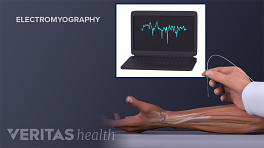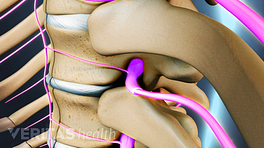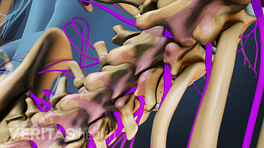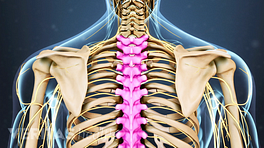EMG/NCS stands for electromyogram and nerve conduction studies. And this is an electrical test of your nerves and muscles. The purpose of the test is to localize where your symptoms are coming from. That can be pain, any kind of numbness and tingling, and/or weakness. And the test is also good at assessing the severity of your symptoms.
The basic preparation for the test really is minimal. We just ask people to wear comfortable, loose-fitting clothing and to not wear any kind of skin creams or moisturizer because they can interfere with the electrodes.
When you come in for the test, normally the first part that you'll go through is the nerve conduction study part, and for that you'll have a few electrodes attached either to your hands, normally, or to your feet, depending upon which part of the body is being looked at. And then you will feel small electric signals and they'll vary in intensity.
And people often ask, "Is it painful?" and what I will always say is that I am controlling how strong that signal is, so if anything is uncomfortable for the patient, they can at any time tell me how it feels and we adjust the intensity of the signal.
The second part of the test is the electromyogram and with this part you will feel—instead of the electric signals—you will feel a small needle poke. And the needle poke is similar to an acupuncture needle in sensation. The needle will be in one muscle at a time, and first we listen to the muscle at rest and then we listen to the muscle when it’s active. And you will hear the actual sound, which is normal because the active muscle is transmitted to a sound wave. And from that, we can tell, from the pattern that muscle makes, we can tell what type of injury is occurring.
The results of the EMG and the nerve conduction study then also guide us more specifically to what type of treatment you should have, typically at your next visit.
Typically, an EMG/nerve conduction studies are ordered when a patient is having some type of nerve symptom. That can be in one, two, or three ways. Either they can have pain, they can have some type of numbness and tingling (it can be a burning sensation), and/or it can be any type of weakness where you’re actually feeling a change in your muscle strength. So, for those three reasons: pain, any kind of change in sensation (numbness/tingling), and for any kind of change in muscle strength usually is when we order the EMG.











